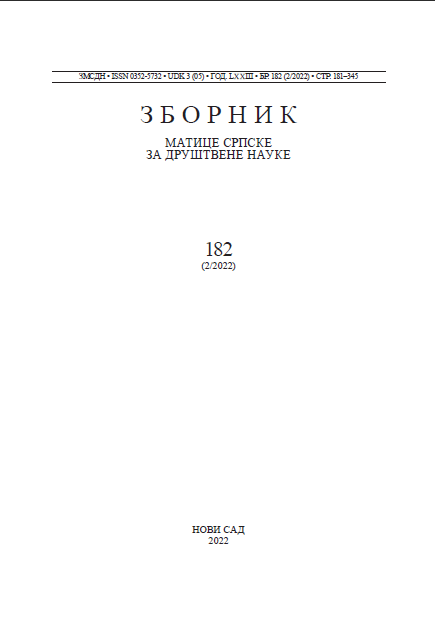ПРИЛОГ ПОЗНАВАЊУ УНУТРАШЊИХ МИГРАЦИЈА У КНЕЖЕВИНИ/КРАЉЕВИНИ СРБИЈИ КРАЈЕМ 19. ВЕКА
CONTRIBUTION TO THE ISSUE OF INTERNAL MIGRATIONS AT THE END OF THE 19th CENTURY
Author(s): Marija KraljSubject(s): Social history, 19th Century
Published by: Матица српска
Keywords: emigration; agrarian overpopulation; Kruševac District; Rudnik District; Toplica District; Užice District
Summary/Abstract: Serbia had been an immigrant nation for the better part of the 19th century. It is only in the very last decade that the trend had been reversed. The shift to emigration had been preceded by a process of various internal migrations. They were encouraged by the liberation of the four districts – Vranje, Niš, Pirot and Toplic – in which the acquiring new properties was substantially encouraged by the Agrarian Law (1880) and through agrarian loans (1882). A significant portion of the migrants coming from one of the liberated districts, Toplica, had come from the Kruševac District. Emigration from the Kruševac district, just like in the case of Rudnik and Užice, was noticed by comtemporaries and subjected to inquiry. The Ministry of National Economy conducted a poll in 1902, testing how many residents had moved out from the mentioned three districts in the period between the liberation and the poll. The questions referred to their whereabouts, motivations and general chronology. The result of the inquest were reports detailing emigration from the Kruševac, Rudnik and Užice districts. Within the archives reports for a total of 51 municipalities were preserved. The Kruševac, Rudnik and Užice districts were composed out of 131 municipalities in total, so the preserved information encompasses a little under a half of the analyzed area. In total ca. 7.5 percent of the population had moved out of the relevant settlements. They were primarily motivated by the lack of land that can be cultivated (or at the very least, of insufficient quality). Agrarian overpopulation had been the principle motif for around 93.5 percent of the emigrants. It has been shown, relying on the agricultural data from the 1889, 1893, 1897, 1900, 1901 and 1902 census (for the entirety of Serbia), crops did not fulfill even the most basic needs of the population. Crop yield per resident in the Rudnik and Užice district was the lowest of all and the situation was seldom dissimilar in the Kruševac district. The unsatisfactory agricultural output when it came to crops was likely impacted by unfavorable terrain. Therefore, it is hardly any wonder the emigrants had mostly been looking for new lands. Overpopulation was likewise confirmed by the specific dates and choice of settlement of the most frequent cases of migration. The liberation of the four districts and the demarcation had enticed a total of 25,09% of the total emigrants throughout 1878 and 1879. Subsequently, the Agrarian Relations Law additionally facilitated a total of 30,1% of emigrants in 1880.
Journal: Зборник Матице српске за друштвене науке
- Issue Year: 2022
- Issue No: 182
- Page Range: 319-338
- Page Count: 20
- Language: Serbian

